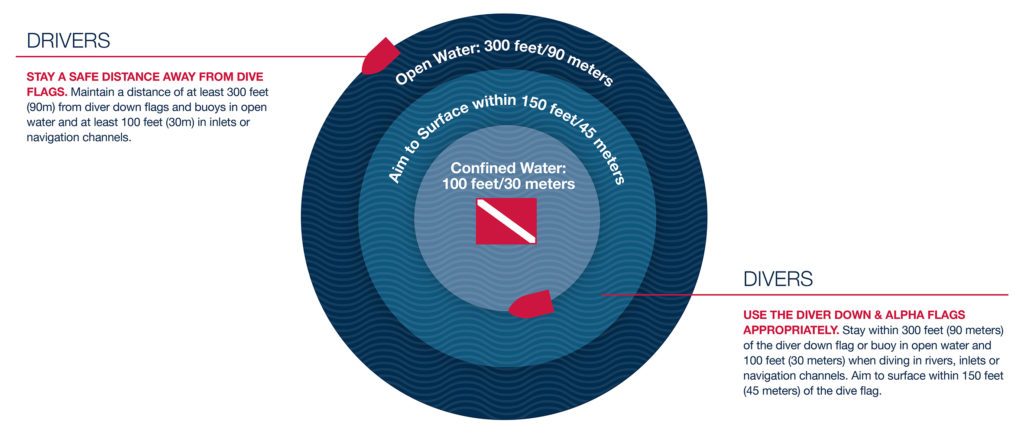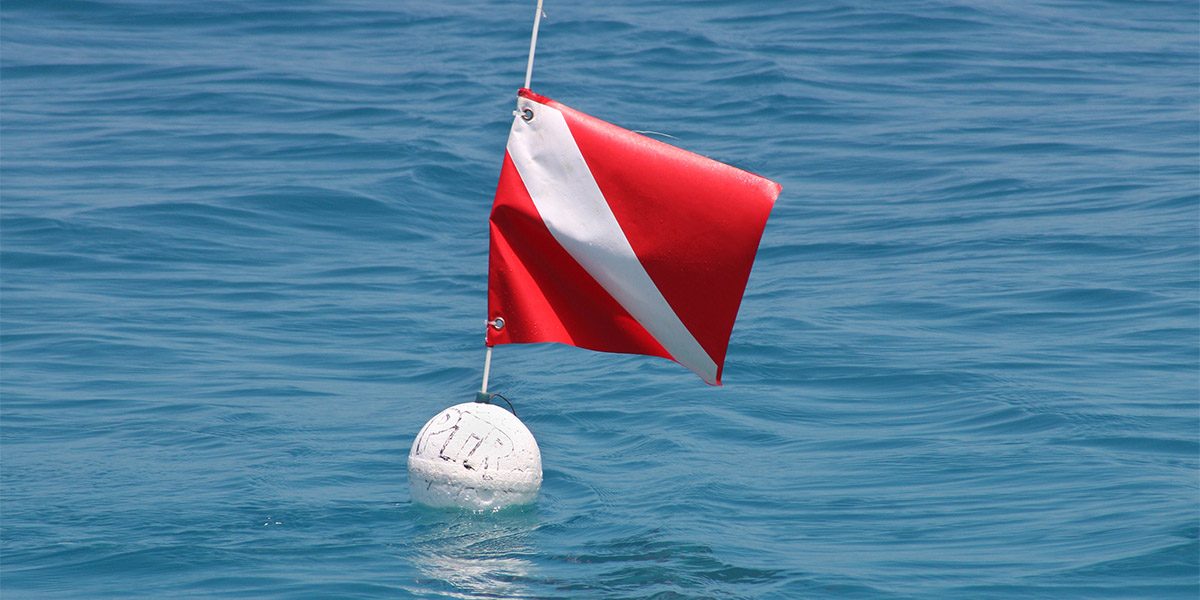To prevent injuries and death by propeller and vessel strikes, divers and boaters must be proactively aware of one another. Make sure to check local regulations before leaving the dock.

For Drivers
Boat operator inexperience and negligence are contributing factors to boat and propeller strikes on divers.
- Constantly look for people in the water. Operator attentiveness is an effective way to prevent accidents.
- Do not assume divers are always visible. Glare from the sun, waves, passengers, weather conditions and other factors can make diver visibility challenging.
- Be prepared. Make sure you have appropriate equipment to respond to an emergency including first aid kits, oxygen units, communication devices and emergency first aid training.
- Observe safety protocols. Ensure the engine is off and the propeller is still before allowing boarding or disembarking. Do not allow people on the swim platform while the engine is in gear. Before starting the boat, make sure no one is swimming or diving near or under the boat.
- Establish clear communication with divers and swimmers. Instruct divers and swimmers to stay clear of the propeller at all times, even when it is not moving (an immobile propeller may still cause injury).
For Divers
Take steps to enhance your safety in the water. Make sure you are visible and adhering to local laws.
- Create an emergency action plan. Prior to arriving at a dive site, make a plan for how you would respond to and evacuate a diver who was injured by a boat or propeller.
- Establish clear communication with the boat operator and others onboard. Pay attention to the boat procedures and dive briefing. Wait until the boat operator indicates the engine is off, and it is safe to enter the water; follow the established safety procedures for entering and exiting the boat.
- Never assume you are visible in the water. Use diver down flags to signal your position to boaters and use surface markers buoys while topside.
- Maintain vigilance. During your safety stop scan for boat traffic.
- Remain clear of the propeller at all times. Even a disengaged propeller can cause injuries.
Dive Flags
When diving, fly the flag. Ensure the flags are stiff, unfurled and in recognizable condition.
Diver Down Flag
This flag explicitly signals that divers are in the water and should always be flown from a vessel or buoy when divers are in the water. When flown from a vessel, the diver down flag should be at least 20 inches by 24 inches and flown above the vessel’s highest point. When displayed from a buoy, the flag should be at least 12 inches by 12 inches.
Alpha Flag
Internationally recognized, this flag is flown when the mobility of a vessel is restricted, indicating that other vessels should yield the right of way. The alpha flag may be flown along with the diver down flag when divers are in the water.
Surface Marker Buoys
When deployed during ascent, a surface marker buoy (SMB) will make a diver’s presence more visible. In addition to a SMB, divers may also use a whistle or audible signal, a dive light or a signaling mirror to notify boaters of their location in the water.
